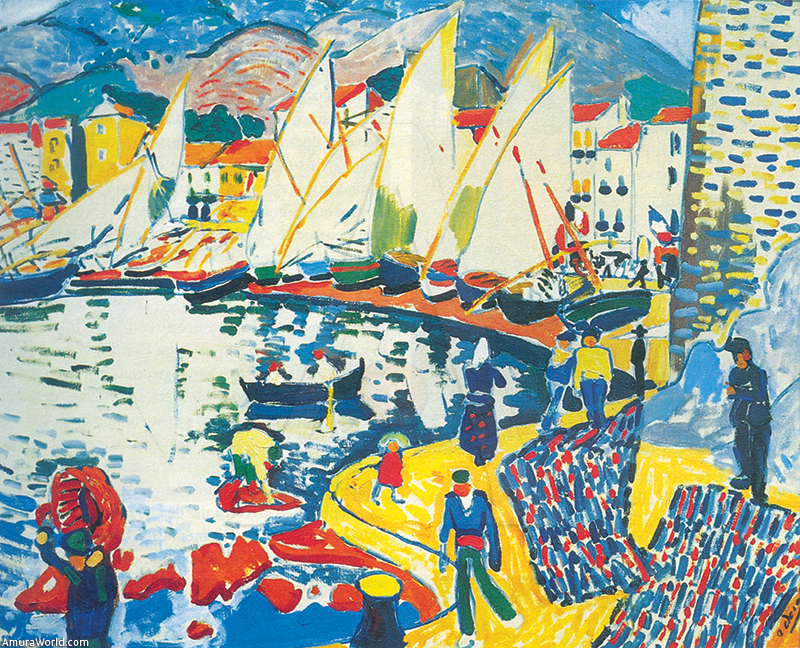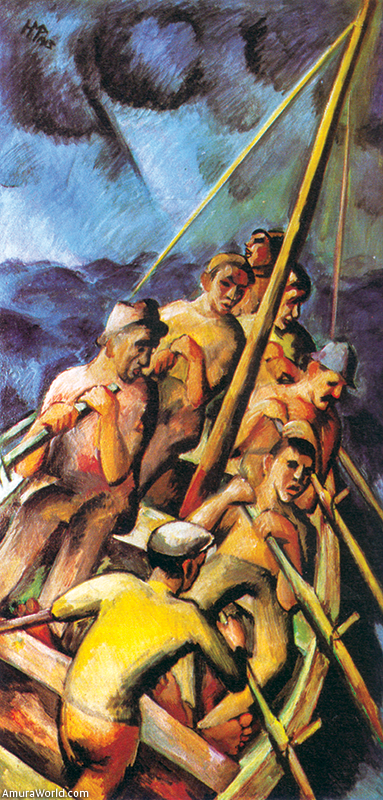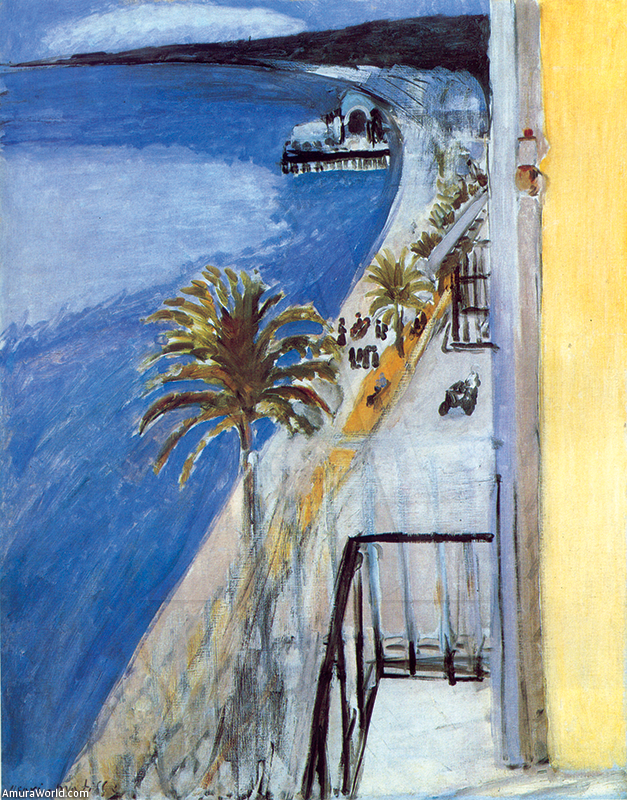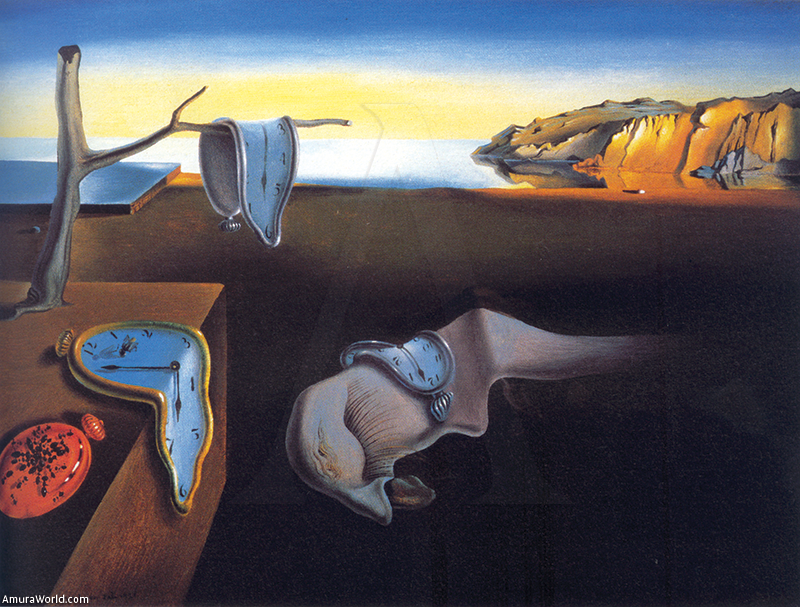The sea as a subject of art often appears in the creations of artists of our times, but also to a great extent of the creators of the past. No so far back in the past, about a century, we knew a glorious era of art in which the sea also played an important role. We are talking about the so-called historical avante garde: Cubism, Fauvism, Expressionism, Futurism, Dadaism, Abstractionism and even Surrealism, renovating movements of a paralyzed art resulting from half a millennium of classical influence, following five hundred years of Renaissance representation.
The beginnings of the 20th century were agitated, revolutionary and affected by war and military language itself would give rise to that concept referring to the first line of fire: avante garde. Hundreds of artists in different countries tackled the problem of new visual art forms; fearless of killing the hen that lays the golden egg, they pounded the battering ram against the artistic institutions. Art was filled with vitality and at the same time moved away from the need to present (which was well achieved by photography), it began to represent, to be presented as advanced art, leaving the past behind and looking to the future.
Through constant experimentation, each of the “isms” seeks new forms of expression, new media and new platforms. Art becomes autonomous, a real laboratory of experimentation of essence and form, of continents and content, of the role of the artist, the public, the distribution channels and the forms of consumption. Scandal, manifestos and the need to destroy what had gone before converted the avante garde movements into a constant succession of struggles and disqualifications to eventually be completely absorbed by the system, or rather by the art market. Agitated imbalance as a form of development, which has provided us with an immense range of possibilities to approach art may also end up becoming lineal.
Here we will look at some examples of the different trends that emerged from beginning of the 20th century in the art world, distinct artists who have the common urge for renewal and also, why not, a fear of the sea.
It is impossible for me to reproduce nature servilely: I am obligated to interpret it, to subordinate to the spirit of the painting. Once I have found all my relationships of the tones of the colors, a harmonious energy of colors must emerge, and analogical harmony similar to that of a piece of music. Henri Matisse
Fauvism (from the French fauve: wild), of which we have two good exponents, André Derain (1880-1954) and Henri Matisse (1869-1954), was one of the first truly avante garde and modern movements: when looking at the painting, one must forget what it represents, Matisse used to say, and also: the painter does not have to worry about the petty details. Photography does so much better and faster. Here, pure color carries the impressionist mist, the high contrast substitutes the drawing, dynamism and sensuality are its raison d’être. The intention is to create an art form that is removed from reality and rather an art that invents its own reality.
While Fauvism and Cubism was developed simultaneously in France, and Futurism in Italy, the so-called Expressionism was emerging in Germany. The Die Brücke group (The Bridge) brought together creative freedom and revolutionary necessity, painting became pure expression of color, full of violence and gestualism, as well as possessing a strong political and philosophical message that tried to transform the mind of all who contemplated it. Here we present a typical work of Max Pechstein (1881-1955). Social awareness and the marked structure of the drawing are his essential characteristics; he tried to use painting as the artist’s means of expression without any ties of any type. Lionel Feininger (1871-1956), of whom we present a beautiful maritime composition, is an artist who sat between Expressionism and Cubism. He was a master painter at the famous Bauhaus School of Art, which tried to transform society through art by providing widespread access to an effective and expressive art; understandable and at the same time, liberating. The works are geometrically structured through a study of light and shade so that each shape “lives its own life” in the final composition. It was all about substituting the composition according to nature through the autonomous structure of the painting.
Surrealism is the last wave of avante garde art that affected not only the techniques and supports but also the content and subject matter of the work of art. Through automatic writing and drawing, the art form tried to show the other worlds in this world; the unconscious world recently discovered by Sigmund Freud, the hidden sexual driving forces, the value of dreams: Dreams, dreams, the dominion of dreams extends to every step (Aragón, 1923). Salvador Dali (1904-1989) is a perfect representative of this spiritual search that went beyond the apparent and showing a much broader reality.
Technically, every work of art comes into being in the same way as the cosmos - by means of catastrophes, which ultimately create out of the cacophony of the various instruments that symphony we call the music of the spheres. The creation of the work of art is the creation of the world.
Wassily Kandinsky
Text: Josu Iturbe ± Photo: IMGRES • AH.





